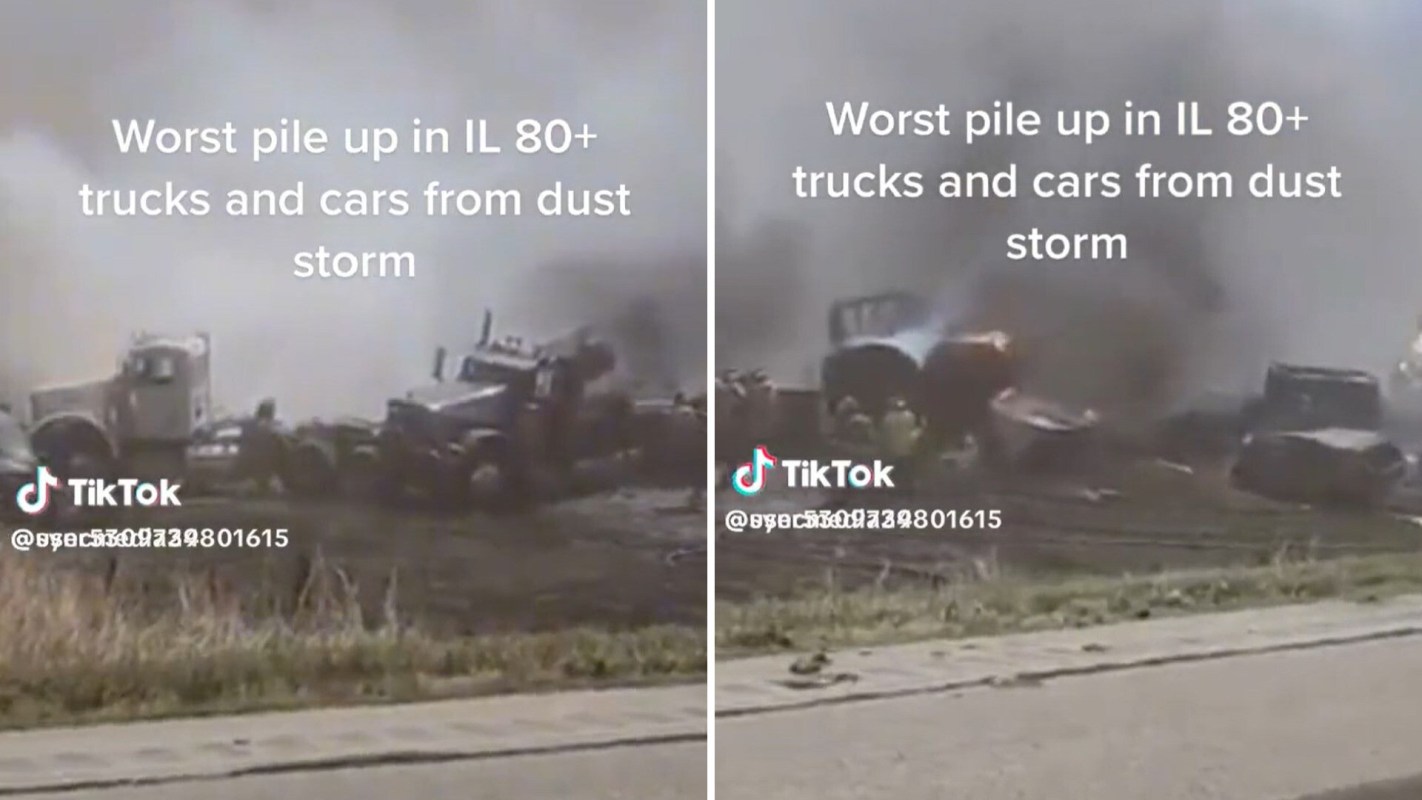A violent dust storm caused a massive 72-car pileup on Highway I-55 near Springfield, Illinois, early on May 1, killing seven while injuring and hospitalizing dozens more.
BREAKING: Dust storm causes massive pileup along I-55 south of Springfield, Illinois; numerous injuries reported
— Intel Point Alert (@IntelPointAlert) May 1, 2023
pic.twitter.com/6lGleA1Trt
The incident left a vast stretch of I-55 shut down as first responders battled hazy conditions to assist the victims.
Evan Anderson, a driver involved in the incident, expressed his disbelief to the Independent, saying, "You couldn't even see. People tried to slow down, and other people didn't, and I just got plowed into. There were just so many cars and semi trucks with so much momentum behind them."
@user5309739801615 #pileup #duststorm #illnois #illnoischeck #foryou #foryourpage #accident #truckers #truckersoftiktok #foryou #foryourpage #stayhome #scary #storm #highwayaccident #travel #traveltiktok
♬ original sound - daytona
Kevin Schott, the head of the Montgomery County Emergency Management Agency, expressed shock over the incident.
"This is a difficult scene, something that is very hard to train for, something that we really haven't experienced locally," Schott said during a Monday press conference.
What caused the pileup?
Dust storms are not uncommon in the Midwest, and the May 1 incident took place during incredibly windy conditions that blew topsoil, dust, and debris off of nearby fields. Dry conditions due to recent below-average rainfall likely exacerbated the dust storm.
Although it's unclear whether or not our overheating planet is to blame for the May 1 incident, scientists have for years predicted an increase in dust storms across the Great Plains because of our changing climate.
Bing Pu, a professor at the University of Kansas, explained to USA Today that when "you have high temperatures and less water based on changing precipitation rates … that could cause an increase in the likelihood of dust events."
USA Today also spoke with Natalie Mahowald, a professor at Cornell University, about how our hotter climate plays a role in dust storms.
"Before, you might have two weeks between rains, and now we're getting three weeks between rains," Mahowald told the outlet. "To keep down dust generation, it's really the very top of the soil that needs to be wet, but it dries out very quickly. This is something we expect more of under climate change."
Avoiding collisions during dust storms
Whatever the cause of these storms, it is wise to be prepared for a situation like this. If you are operating a vehicle and see a dust storm blowing in, slow down and get off the highway if you can.
If you can't make it through the hazardous conditions without putting yourself at risk, pull over to the side of the road on the right. Never stop in the middle of the highway, as this can cause accidents, according to tips collected by NPR Illinois.
The solution
While dust storms will continue to happen in the Midwest, we can all do our part to ensure that our overheating planet isn't exacerbating the situation (i.e., changing rainfall and wind patterns or drying out the soil) by doing our part to cool the Earth down.
One significant possible change is to switch our home's electricity source from dirty energy to abundant, clean sources like solar and wind. Adding solar panels to your home could, in addition to helping cool down the planet, seriously cut down your electricity bills.
One estimate by Forbes asserts that if your solar power system is effective, it could save you up to $1,500 a year on energy costs. Plus, thanks to the Inflation Reduction Act (IRA) offering a 30% tax credit for solar equipment and installation, now is an excellent time to upgrade your home.
If the upfront cost of the panels is too much, you could also swing for community solar, which provides many of the benefits of cheap, clean solar energy, but without the need to install or maintain panels.
There are also IRA rebates and tax credits for those interested in upgrading to specific energy-efficient appliances, like heat pumps and induction stoves. Rewiring America, a home electrification nonprofit, has a tool that can help you determine exactly how much money you could save from these IRA incentives.
Join our free newsletter for cool news and actionable info that makes it easy to help yourself while helping the planet.









